The Tippler pigeon is, like so many others, a crossbreed that has been specially developed by selective breeding for a specific purpose.
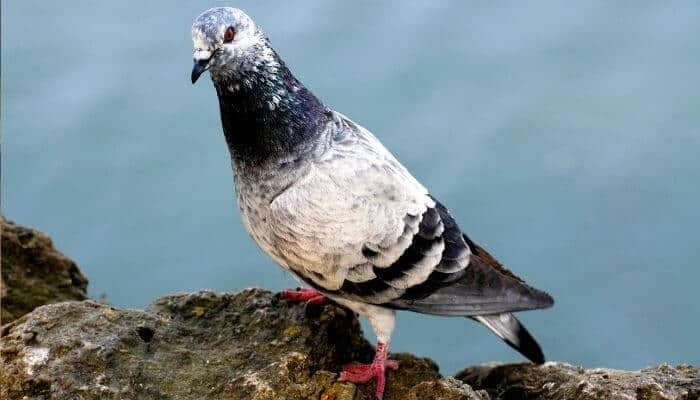
Tippler pigeons are bred for their strong flying skills and their ability to stay airborne for long periods of time, up to 20 hours!
Tippler Pigeon Origins
The origins of tipplers are uncertain.
There isn’t much corroborated history behind this breed.
One of the most accepted theories is that their origins are in the north of England during the 19th century.
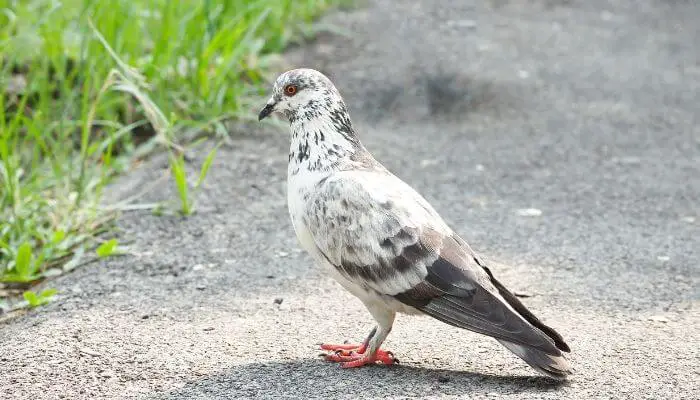
One breeder claims to have started this breed in East Cheshire back in 1845, but another claims to have been breeding them as far back as 1837.
In 1893, a Mr W. Jolly claimed to author Wendell Levy, who duly recorded it in his book The Pigeon that he had been breeding Tipplers for 56 years.
All that is known with certainty is that there were several breeders around at the same time and the names of these breeds were mostly taken from the towns or areas where their breeders lived.
Some modern-day tipplers are known by the names of recognised breeders such as Gordon Hughes or Jack Boden.
It is also certain that the aim of the cross-breeding was to perfect the butterfly action of the pigeon’s wings in flight, with the presumption that the smoother flying action would help with flight endurance.
Tippler Pigeons Are A Result of Cross Breeding
The first Tippler was a cross between the French Cumulet and an Indian Highflyer.
The Cumulet pigeon is a high-flying breed that is known for its success as a short-distance and strong racer.
The Cumulet itself was originally bred as a homing pigeon from such mixed breeds as the English Carrier, Smerle, and Dragoon pigeons.
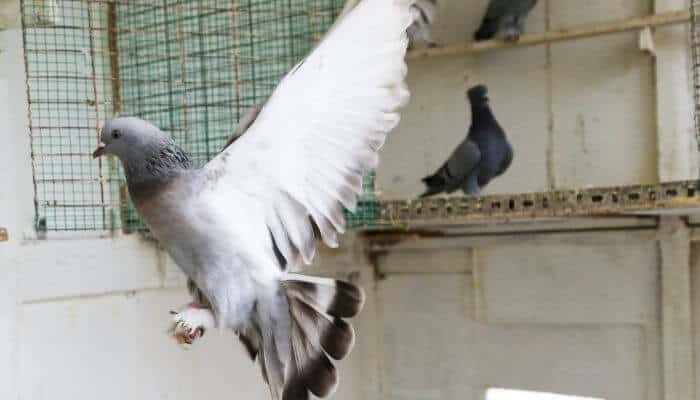
The specific Indian Highflyer hasn’t been identified, but the original birds may have been the Thavdal or Madrasi Highflyer.
Native to Southern India, they have a streamlined appearance and are noted for their endurance.
Many of these birds have a strain of tumbler pigeon in them.
This has been noted by explorers and other visitors to the Indian sub-continent hundreds of years before the craze of pigeon breeding and racing reached Europe.
The breeding of the Cumulet and Highflyer appears to have eradicated the tumbling predilection of many pigeon breeds from the Tippler.
Tipple Pigeon Endurance Tests
Homing pigeons race by being timed over a certain distance so they need lots of stamina.
Conversely in a Tippler race, the birds compete against each other to see who can stay airborne for the longest period of time.
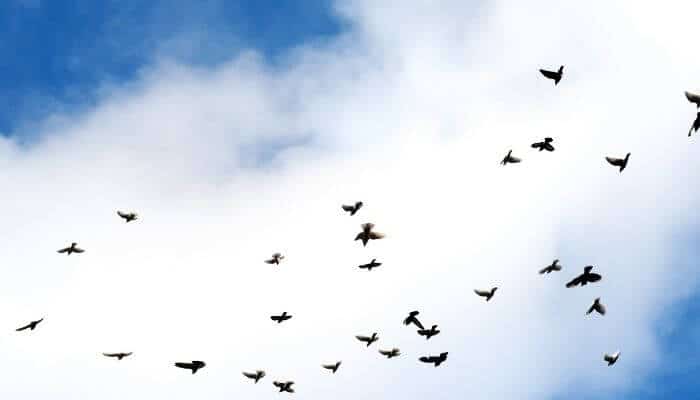
The birds are trained to stay aloft until their owner recalls them and are also trained to land on command.
They compete by staying in the same area as their lofts and are timed against other kits doing the same in different areas (a ‘kit’ is a group of at least 3 birds flying together at the same time).
The average in-flight times of these birds are said to be anything between 14-19 hours, but there are also claims of up to 22 hours.
Tippler Appearance and Characteristics
Tipplers are of various sizes and colours, depending on the breeder. It is said that they are an intelligent breed among an intelligent species and are easy to train.
As can be expected of endurance flyers, they are hardy and active birds.
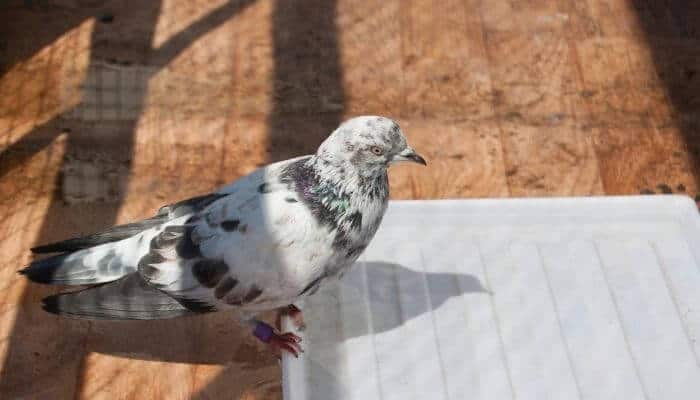
They are tolerant to all types of climates and said to make excellent pets.
They also make beautiful exhibition birds with their sleek appearance.
The characteristics of the main types of Tippler are:
- Jack Boden Tippler: Bred in Handsworth, Birmingham, England their colours are blue, greys, sandy brown, and white. This Tippler type has been recorded as achieving more than 20 hours of continuous flight on numerous occasions.
- Gordon Hughes Tipplers: Bred in Derby, England, these birds are grey and blue or blue with white. Records of Hughes Tipplers show the birds to have flown for more than 19 hours many times.
- Sheffield Tipplers: These birds originate in Yorkshire, England and are usually red and yellow in colour. They are another Tippler type that has many records of 20-hour flights.
Other common breeds include:
- Lovatt Tipplers
- Macclesfield Tipplers
- Manchester Tipplers
- Irish Blue Tipplers
In the USA, a favoured type is the Storey, which is a strain of the Macclesfield type, bred by namesake, Mr. Storey, in England.
His prize bird was “Westering Prince”, and he is still the emblem of the Flying Tippler Association of America.
It is believed a Canadian purchased a pair of breeding birds from Mr. Storey and from there they spread throughout Canada and the USA.
Tippler Competitions
These types of competitions take place all over the world. In Britain, they are usually conducted under the National Tippler Union of Great Britain, NUT rules.
Traditionally, these competitions start around April each year.
The main one is called “Long Day”.

Rules vary by club, association, and country but generally, the competition is defined as allowing the kit of pigeons to fly above and around their home base for as long as possible.
The beginning of the flight is recorded, and the total flight time is recorded when one of the Tipplers lands. A bird can be called down from the flight by the handler/owner.
Competitions are between “old” and “young” birds.
Young birds are those that have hatched in the current year. Anything beyond that is simply an old bird.
As an example for just how long these birds can sustain flight is seen below in these records:
Top 5 Old Tippler Flight Time Records:
- Ireland, 22:05, Harry Shannon, Lisburn, 1995
- England, 21:21, Anslow, Tipton, 1994
- Germany, 20:35, Imer Saipi, Horstmar, 2005
- Wales, 20:32, Frohwein, Dower, 2001
- Holland, 20:31, van der Werf, Oosterbierum, 2005
Top 5 Young Tippler Flight Time Records:
- Germany, 20:29, Kocholl, Mudau, 2004
- Holland, 20:01, van der Werf, Oosterbierum, 2002
- Ireland, 19:40, Shannon, Lisburn, 1993
- England, 19:34, Plester, Birmingham, 1990
- Belgium, 18:25, Ouwerkerk, Brasch, 1991
The experience of older birds clearly gives them an advantage.
Summary
Although their origins are shrouded in mystery because of the lack of certified records, this breed of pigeon is one of the various types to be developed by years of cross-breeding and survives today.
In fact, this breed thrives all over the world due to the efforts of avid pigeons fanciers.
To find out more about the breeding or sale of these amazing birds it would be an idea to contact the National Tipplers Union of Great Britain.
